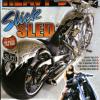Brake Pads
Announcements
-
Similar Content
-
Latest Posts
-
Great article! It’s always good to see more discussion around sustainable vehicle recycling and reusing auto parts. Reliable Car Wreckers Brisbane services play a big role in reducing waste while offering affordable Used Auto Parts Brisbane to drivers. Professional Car Wreckers also ensure that old or damaged vehicles are dismantled safely and responsibly, helping both the environment and the local community.
-
Great article! It’s always good to see more discussion around sustainable vehicle recycling and reusing auto parts. Reliable Car Wreckers Brisbane services play a big role in reducing waste while offering affordable Used Auto Parts Brisbane to drivers. Professional Car Wreckers also ensure that old or damaged vehicles are dismantled safely and responsibly, helping both the environment and the local community.
-
Great post! QLD Wreckers is one of the most trusted <a href="https://www.qldwreckers.com.au">Car Wreckers Brisbane</a> has to offer, providing reliable and hassle-free services for all vehicle types. Whether you need quick <a href="https://www.qldwreckers.com.au/car-removal/">Car Removal Brisbane</a> or want to get top <a href="https://www.qldwreckers.com.au/cash-for-cars/">Cash for Car Brisbane</a>, their professional team ensures a smooth process from start to finish. Highly recommended for anyone looking to sell their unwanted or damaged car easily!
-
You are selling this? I have never bought something from marketplace...i dont know if i trust that enough. And the price is little bit "too" good...
-
By Watermouse · Posted
https://www.facebook.com/share/19kSVAc4tc/?mibextid=wwXIfr
-




Recommended Posts
Create an account or sign in to comment
You need to be a member in order to leave a comment
Create an account
Sign up for a new account in our community. It's easy!
Register a new accountSign in
Already have an account? Sign in here.
Sign In Now